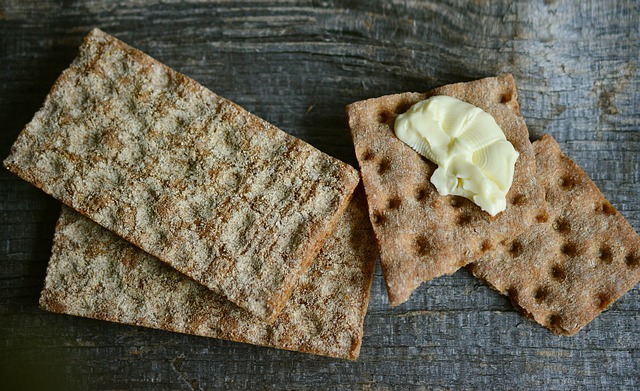Gluten is the gluten of cereals. Even if they are whole grains, even with vitamins, even without (refined products). Almost all cereals contain gluten. Here are grain products that contain gluten: wheat and all its derivatives (including its seedlings), bulgur, rye, couscous,
durum, spelt, semolina, kamut, matzo, barley pearl, barley, plain oatmeal (without the “gluten-free” label). How to live gluten-free and full-fledged replacements for gluten products.
(1) – “Gluten is a high-molecular-weight seed storage protein commonly found in grass-related grains, such as wheat, barley, and rye. The natural role of these seed storage proteins is to nourish seeds during flowering and germination, thereby contributing to the successful reproduction of the species. Gluten is a composite protein, composed of glutenin and prolamins, and is also responsible for the ability of wheat to form dough. Hence, gluten is an integral component of an incredible variety of wheat-containing foods, including breads, cereals, and pastas.”
As you can see, gluten is in a lot of grain products.
Who hasn’t realized the scale yet, here is a list of grain products that are familiar to us, where there is gluten: bread, pasta, cookies, cakes, breadcrumbs, muesli, granola, waffles, drying, muffin, porridge.

And about the good — in which cereals there is no gluten: buckwheat, rice, corn, quinoa, millet amaranth.
Products from these crops do not contain gluten. That is, you can safely eat rice noodles, buckwheat porridge and corn tortillas. But please make sure that the corn tortillas are made from a mixture of corn and wheat flour. It happens often. Gluten is addictive.
(2) – “People with gluten sensitivity have problems with gluten. It is different from celiac disease, an immune disease in which people can’t eat gluten because it will damage their small intestine.
Some of the symptoms of gluten sensitivity are similar to celiac disease. They include tiredness and stomachaches. It can cause other symptoms too, including muscle cramps and leg numbness. But it does not damage the small intestine like celiac disease.
Researchers are still learning more about gluten sensitivity. If your health care provider thinks you have it, he or she may suggest that you stop eating gluten to see if your symptoms go away. However, you should first be tested to rule out celiac disease.”
A complete replacement for products with gluten. How to live gluten-free and full-fledged replacements for gluten products.
How to replace regular bread with gluten. If there are no such at your disposal, then you can:
Bake bread yourself from gluten-free flour. The Internet is full of gluten-free bread recipes. Therefore, the solution is not suitable for everyone – to give up bread altogether. Come up with other useful options for lunches and breakfasts.
Bake bread from special gluten-free mixes, where you simply add water, knead and bake. Such mixtures can be found in supermarkets.
You can cook or buy gluten-free bread instead of regular bread. Gluten-free flour loaves are very easy to bake: they do not need to rise and be lush, like bread. Also, loaves are usually tastier than gluten-free bread, because they contain a lot of seeds and nuts.
Crispy bread recipe

Ingredients:
Oat flakes 3.53oz
Sunflower seeds, peeled 3.53oz
Flax seeds 2 tablespoons
Pumpkin seeds 3 tablespoons
Sesame seeds 3.53oz
Gluten-free flour 10.58oz
Cold pressed olive oil 3.53oz
Water 1 cup
Baking powder 1 teaspoon
Salt 1 teaspoon
Instruction:
First, pour the seeds, then measure the flour. Mix everything together. Add salt, flakes and baking powder. Mix it too. Then measure the water and oil. Pour them into the resulting mixture and stir well with a spoon until smooth. The dough should be a little sticky.
Take 2 baking sheets. Spread 2 pieces of baking paper the size of a baking sheet on the table. Spread the dough evenly on them.
Then cover with another layer of paper and roll out with a rolling pin — it will be neater this way. Remove the top layer of paper and cut the dough with a sharp knife into pieces of the desired size. You can not cut — then after baking the sheets will have to be broken with your hands. But if you cut it, it turns out more beautiful.
Carefully transfer the paper (bottom) sheets with the dough to 2 baking sheets.
Bake at 392 F for about 15-18 minutes. The loaves should be well browned. The bottom baking tray is usually baked for longer than 3 minutes. As a result, you will get a whole box of loaves.
If you decide to bake gluten-free bread yourself, then you may need a good bread maker with a gluten-free program. Gluten-free flour is more difficult to turn into fluffy bread, so it will be difficult to bake such bread yourself.
How to replace pasta:
Now there are a lot of legume pasta on sale (corn, lentils, beans, green peas) Rice noodles are also suitable. It also does not contain gluten. Its only disadvantage compared to legume pasta is that there is almost no fiber in it. But delicious. And children are very fond of rice noodles, so rice noodles are a real find in the nutrition of children.
Gluten-free pastries:
Various raw food cakes and cookies that use nut flour instead of the usual one will come to your aid here. You can also bake something from rice, buckwheat or corn flour. It turns out delicious too. The only thing is: you will have to look for special recipes. Remember that it is gluten that allows the dough to be airy? Therefore, you will not be able to simply replace the usual flour in the biscuit recipe with, for example, rice flour: the cake will turn out to be completely different from how it should be.
Vegan cheesecake with berries. How to live gluten-free and full-fledged replacements for gluten products.
Cooking time – 30 minutes + overnight soaking nuts + 12 hours in the freezer (vegan desserts take time, as they do not contain binding eggs and liquid ingredients for creams.)

Cheesecake ingredients (about 8 servings):
For the cream:
Raw cashews, unsalted, soaked overnight in water 7.0 oz agave
syrup (or maple syrup, or honey) 4 tablespoons
Melted coconut oil (about 7 tbsp frozen) 1/2 cup
Vanilla powder (or vanilla from 1 vanilla stick) 1 teaspoon
Water 5 tablespoons
Juice of 1/2 lime or lemon
For the cake:
Almonds 4 tablespoons
Walnuts 4 tablespoons
Pitted dates 8 pcs
Small coconut chips 3 tablespoons
Coconut oil (melted) 2 tablespoons
Salt to taste
For decoration:
Any fresh berries (if not, then ordinary fruits will do!) 7.0 oz
Instruction:
Cream: soak cashews overnight in water. In the morning, drain the remaining water and rinse the nuts in a sieve with clean water. Mix all the ingredients for the cream in a blender or in a food processor until smooth (about 5-8 minutes). If the mass is too thick, add more water.
Cake: Pour the nuts into a blender or food processor and grind so that they are roughly ground. Straight with pieces of nuts – then it will taste better. Add dates, salt, coconut flour, and mix again until the mass becomes homogeneous.
Place the baking dish with a thin packaging film and first lay out the mass for the cake, and on top — the cream. Smooth each layer well so that the cake is the same height. Put the cake in the freezer for 12 hours. Before serving, sprinkle the cake with berries (fruits).
How to make gluten-free sauces:
Everything is very simple here. Gluten-free flour will also help thicken the sauce, as will wheat flour. Any one will do: rice, buckwheat, corn, quinoa flour.
What to add to cutlets and meatballs:
Here, too, everything is simple. Add any gluten-free flour. Bread successfully replaces plain flour. In this case, gluten-free. For 17.63 oz ounces of meat – about 3 tablespoons of flour.
How to make a gluten-free breakfast. How to live gluten-free and full-fledged replacements for gluten products.
Porridge: unfortunately, the usual oatmeal will have to be replaced by a more expensive one, which has the inscription “gluten-free”. Wheat, rice and buckwheat porridge are also suitable. You can try quinoa.

Muesli and granola: if you don’t want to give them up at all, then you can make them yourself from gluten-free flakes.
Breakfast cereals: I also don’t recommend eating them at all. A lot of sugar, and even if it says “no sugar” on the package, then all flakes are poor in fiber and raise blood sugar, since they contain a lot of glucose and are a super-fast carbohydrate.
Another disadvantage of flakes: saturation from them is enough for only a couple of hours, unlike properly cooked porridge (with nuts, butter and seeds). If you can’t live without flakes at all, then there are corn products on sale that do not contain gluten. The main thing is to approach this process creatively.
(1) – U.S. National Library of Medicine; A Gluten-Free Diet, Not an Appropriate Choice without a Medical Diagnosis. Ana Diez-Sampedro, Maria Olenick, Tatayana Maltseva, and Monica Flowers. https://www.ncbi.nlm.nih.gov/pmc/articles/PMC6636598/
(2) – U.S. National Library of Medicine; Gluten Sensitivity. Also called: Gluten Intolerance. Dept. of Health and Human Services Office on Women’s Health. https://medlineplus.gov/glutensensitivity.html



